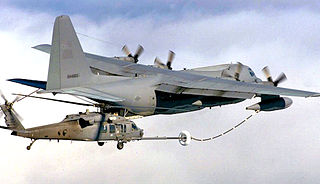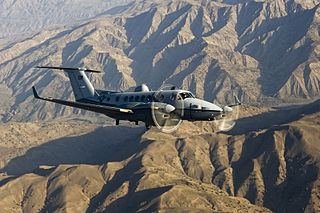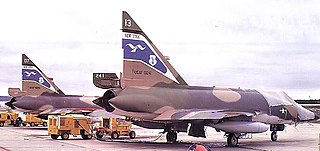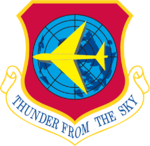
The 180th Airlift Squadron is a unit of the Missouri Air National Guard 139th Airlift Wing located at Rosecrans Air National Guard Base, St. Joseph, Missouri. The 180th is equipped with the C-130H2 Hercules.

The 108th Wing is a unit of the New Jersey Air National Guard, one of the many units stationed at the McGuire Air Force Base entity of Joint Base McGuire-Dix-Lakehurst, New Jersey. If activated to federal service, the Wing is gained by the United States Air Force Air Mobility Command.

The 106th Rescue Wing is a unit of the New York Air National Guard, stationed at Francis S. Gabreski Air National Guard Base, Westhampton Beach, New York. If activated to federal service, the Wing is gained by the United States Air Force Air Combat Command.

The 136th Airlift Wing is a unit of the Texas Air National Guard, stationed at Naval Air Station Joint Reserve Base Fort Worth, Fort Worth, Texas. If activated to federal service, the wing is gained by the United States Air Force's Air Mobility Command (AMC).

The 507th Air Refueling Wing is a reserve component flying unit of the United States Air Force. It is assigned to Fourth Air Force of Air Force Reserve Command, stationed at Tinker Air Force Base, Oklahoma with elements at Altus Air Force Base, Oklahoma. The 507th ARW executes air refueling, airlift, and training in support of Air Mobility Command and U.S. Strategic Command's national emergency war order requirements. The wing employs approximately 1,100 men and women made up of a mix of Traditional Reservists, full-time Air Reserve Technicians, AGRs and Air Force civilians. The wing also provides mission support for all other reserve units stationed at Tinker AFB.

The 126th Air Refueling Wing is a unit of the Illinois Air National Guard, stationed at Scott Air Force Base, Belleville, Illinois. If activated to federal service, the Wing is gained by the United States Air Force Air Mobility Command.

The 137th Special Operations Wing is a unit of the Oklahoma Air National Guard located at Will Rogers Air National Guard Base, Oklahoma. If activated to federal service, the wing is gained by Air Force Special Operations Command. During World War II, its predecessor, the 404th Fighter Group, flying Republic P-47 Thunderbolts, provided close air support to troops following the Operation Overlord, the Normandy landing until the close of the war. The wing is entitled to the honors won by the group by temporary bestowal.

The 171st Air Refueling Squadron is a unit of the Michigan Air National Guard's 127th Wing located at Selfridge Air National Guard Base, Michigan. The 171st is equipped with the KC-135T Stratotanker.

The 136th Attack Squadron is a unit of the New York Air National Guard 107th Attack Wing located at Niagara Falls Joint Air Reserve Station, New York. The 136th is equipped with the MQ-9 Reaper. If activated to federal service, the Wing is gained by the United States Air Force's Air Combat Command.

The 181st Airlift Squadron is a unit of the 136th Airlift Wing of the Texas Air National Guard stationed at Naval Air Station Joint Reserve Base Fort Worth, Texas. The 181st is equipped with the Lockheed C-130J Hercules.

The 142d Airlift Squadron is a unit of the Delaware Air National Guard 166th Airlift Wing located at New Castle Air National Guard Base, Delaware. It is equipped with the C-130H Hercules.

The 185th Special Operations Squadron is a unit of the Oklahoma Air National Guard's 137th Special Operations Wing, located at Will Rogers World Airport, Oklahoma City, Oklahoma. The 185th is the only National Guard unit to be equipped with the MC-12W. The unit is known as the "Sooners". Famous unit alumni include former Vietnam prisoner of war Brig. Gen. James Robinson "Robbie" Risner and Astronaut Captain Fred Wallace Haise Jr., Apollo 13 Lunar Module Pilot.

The 173d Air Refueling Squadron is a unit of the Nebraska Air National Guard 155th Air Refueling Wing. It is assigned to Lincoln Air National Guard Base, Nebraska and is equipped with the Boeing KC-135 Stratotanker.

The 174th Air Refueling Squadron is a unit of the Iowa Air National Guard 185th Air Refueling Wing. It is assigned to Sioux City Air National Guard Base, Iowa and is equipped with the KC-135R Stratotanker aircraft.

The 125th Fighter Squadron is a unit of the Oklahoma Air National Guard 138th Fighter Wing located at Tulsa Air National Guard Base, Oklahoma. The 125th is equipped with the Block 42 F-16C Fighting Falcon.

The 128th Airborne Command and Control Squadron is a unit of the Georgia Air National Guard 116th Air Control Wing located at Robins Air Force Base, Georgia. The 128th is equipped with the E-8C Joint STARS.

The 140th Operations Group is a unit of the Colorado Air National Guard, stationed at Buckley Space Force Base, Aurora, Colorado. If activated to federal service, the group is gained by Air Combat Command of the United States Air Force.

The 186th Airlift Squadron is a unit of the Montana Air National Guard 120th Airlift Wing located at Great Falls International Airport, Montana. The 186th is equipped with the C-130H Hercules.

The 106th Fighter-Interceptor Wing is a former unit of the New York Air National Guard, last stationed at Francis S. Gabreski Air National Guard Base, Westhampton Beach, New York.

The 107th Attack Wing is a unit of the New York Air National Guard, stationed at Niagara Falls Air Reserve Station, New York. The 107th is equipped with the MQ-9 Reaper. If activated to federal service, the Wing is gained by the United States Air Force's Air Combat Command.




























